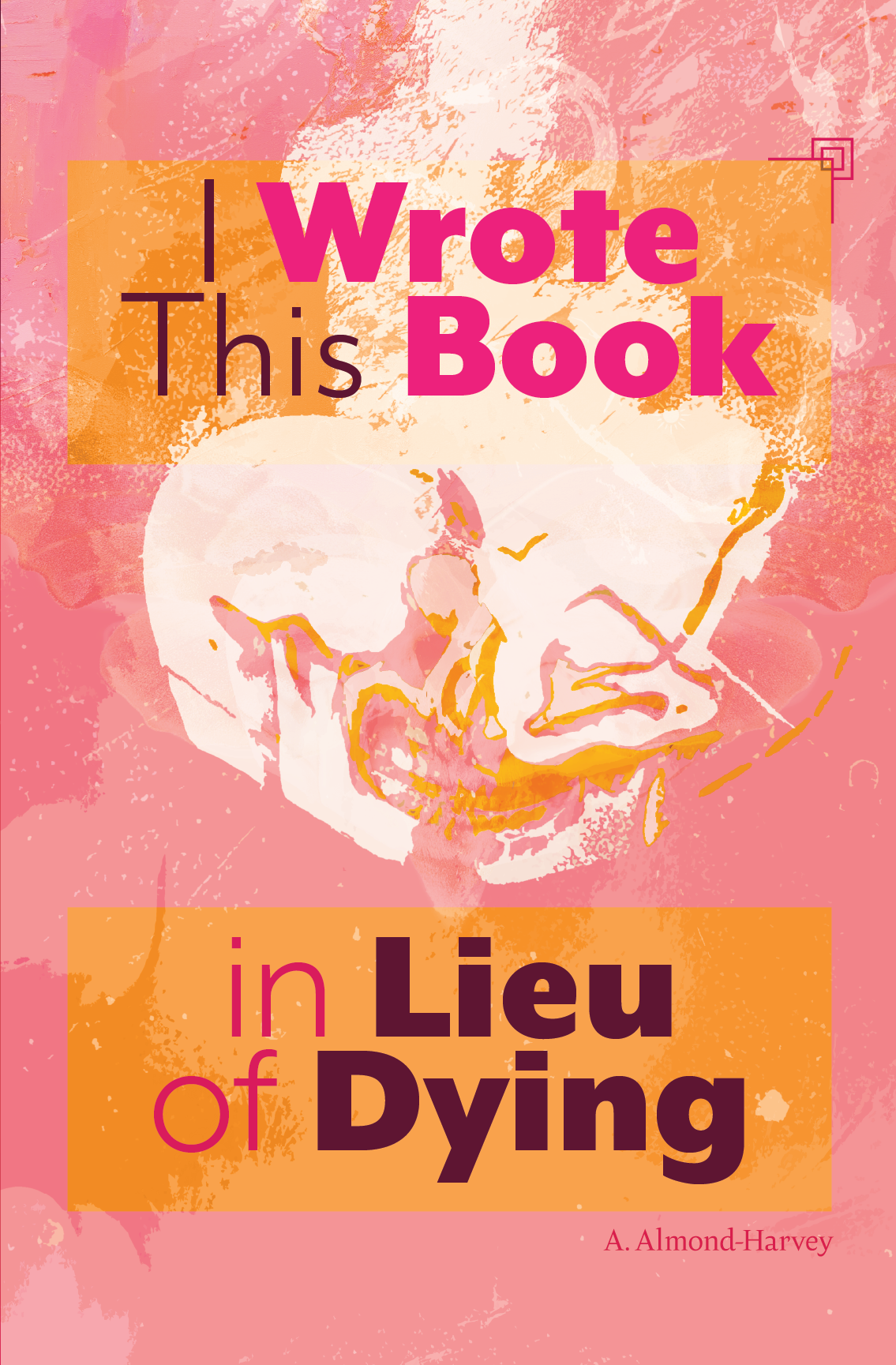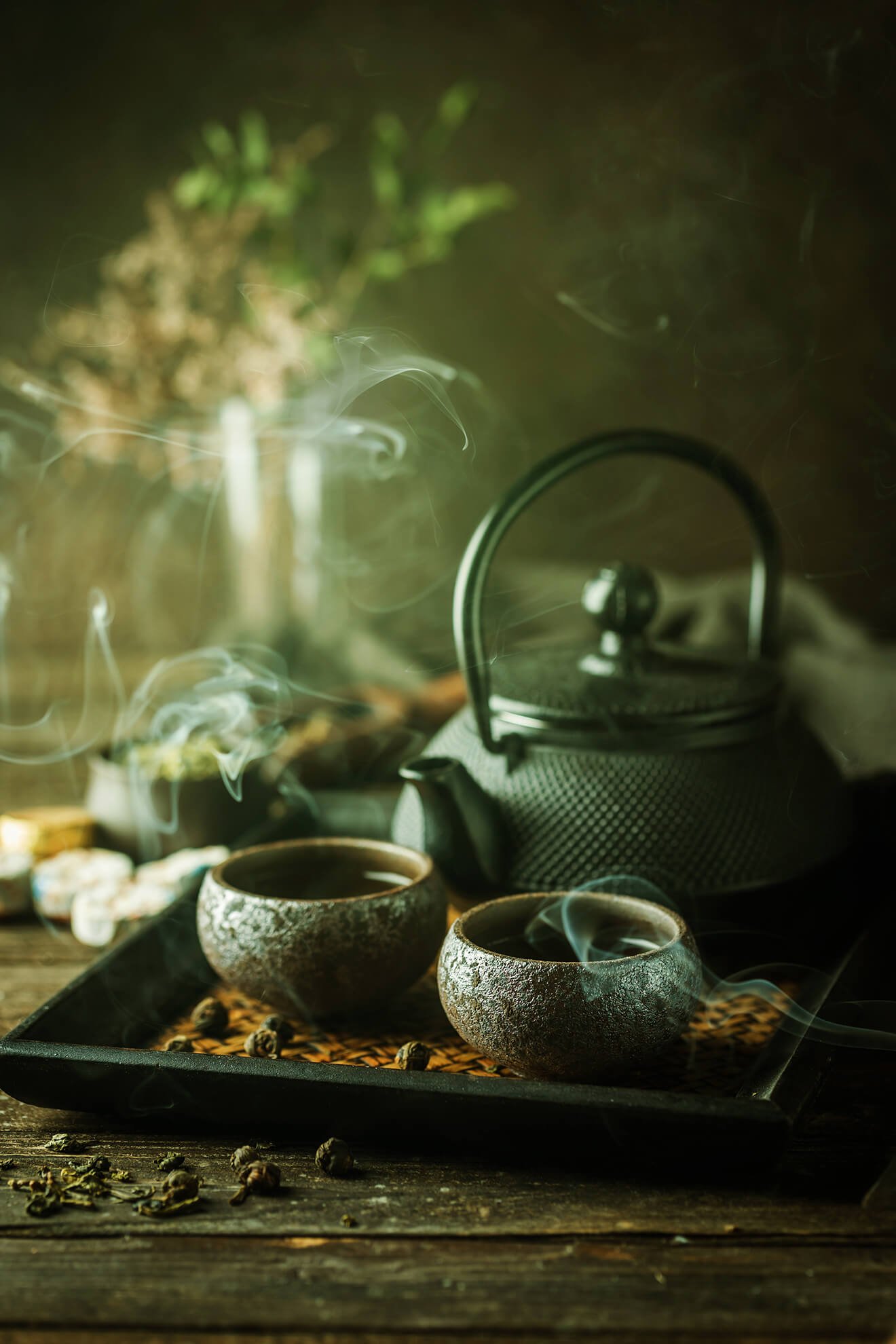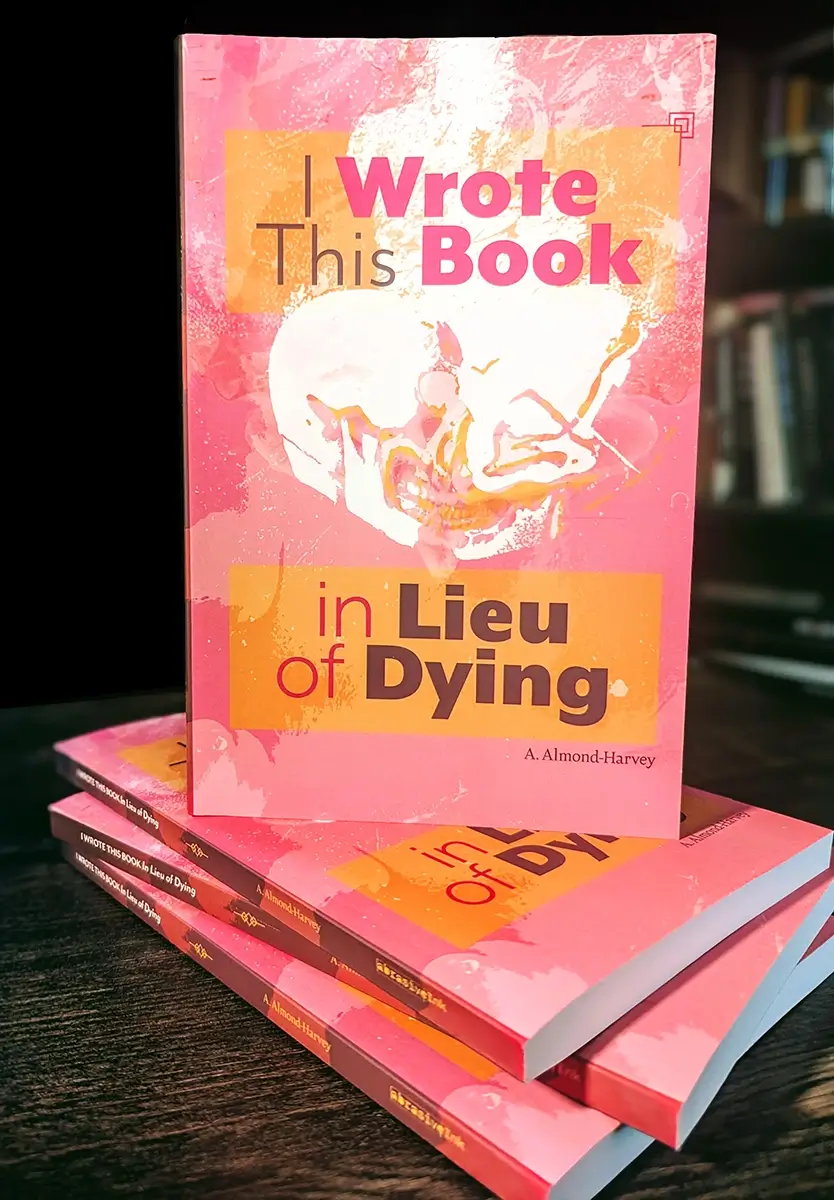On Sale Now
I Wrote This Book In Lieu of DyingThis book was born from a pivotal moment when the specter of mortality loomed, and the extent of the resulting doctors' bills was unknown. The author decided it was the perfect opportunity to examine the queries driving their existence.
As it turns out, the questions to probe were not "Why do I live?" or "What is the meaning of a life bound for death?" but rather, "Who is this person who is currently living, and where have I seen them before?"

BEHIND THE SCENES
I Wrote This Book in Lieu of Dying

"Time may not flow in a linear fashion.
I would pour myself a beverage if I were
you—this could take a while."

PROCESS
This book was written, compiled, edited, and curated over nine years. A. Almond-Harvey wrote it in response to ever-increasing chronic health challenges. "Westerners in general, but Americans in particular, tend to struggle with the narrative of chronic illnesses and conditions," Almond-Harvey writes. With acute health situations, there's a defined beginning, middle, and end. This aligns perfectly with our culture's interpretation of the hero's journey from classical Western literature."
"But with chronic conditions, we're working with a circular narrative. Flares come in cycles. My cultural heritage includes a non-linear view of time. It is handy when one needs to conceptualize a newly limited life as one with boundless opportunities for creativity regardless of the painful, absurd, and tedious limitations of chronic illness. People like me are supposed to quietly diminish themselves as few able-bodied folks want to think about what it would be like to live lives like ours. I claim the right to take up space, undergo metamorphosis, return to my memories, and explore the future. This is a book by a multiracial, disabled, gender-fluid person, and it is about whatever the *!%* I want it to be about."
PRAISE FOR THE BOOK
“As the title clearly states ... THIS IS NOT A DEATH. Even if she lies to us, (which she never does for one second in these pages) and tries to mask this as a resignation or a farewell, Audra’s voice is so present throughout this work that the reader would never entertain that possibility.
As someone who knows her, I can assure you that all that she remembers, so much of what she’s come to know, believe, and understand, as well as all that she intends for herself (and, more importantly, us as readers) is here. This is not a death. This is not a resignation. This is a transformation. This is the testimony of someone who’s been able to view their past with full clarity and has decided to claim the right to transform themselves and share it all with you.”

“Whether you are approaching her work for a source of inspiration, entertainment, or nourishment, you will find her words a lovingly crafted balm for the known and the hidden spaces within yourself that you may not have even realized you needed.”